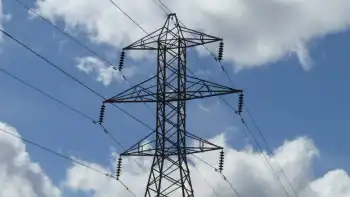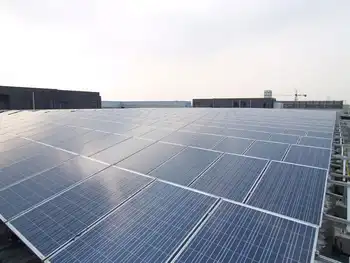Hybrid trucks drawing attention
By Knoxville News Sentinel
NFPA 70e Training
Our customized live online or in‑person group training can be delivered to your staff at your location.

- Live Online
- 6 hours Instructor-led
- Group Training Available
Hybrid cars have been attracting drivers in search of greener and more economical transportation, and now it appears the hybrid vehicle is sparking some interest in Knoxville's market for large commercial trucks.
MHC Kenworth-Knoxville on Ault Road held an open house to show off a type of diesel/electric medium-duty truck it plans to stock, drawing a crowd of about 20-30 people representing several businesses and some local governments.
The 2009 Kenworth T270 truck, which combines a 300-horsepower engine with a 340-volt battery pack, is targeted to local businesses that have stop-and-go deliveries and utility companies and others that might need a vehicle to idle for considerable periods of time.
Walt Connors, new-truck sales manager for MHC Kenworth, said the selling price of the truck - $40,000-$50,000 - isn't cheap, but the 35 percent to 60 percent fuel savings it can provide will more than offset that cost to the owner. Plus, a $6,000-$12,000 federal tax credit is available for buying the hybrid vehicle, said Bud Lobetti, who will sell the trucks at MHC Kenworth.
Knox County Commissioner R. Larry Smith was among those who came out to see the vehicle.
"We were talking about this just yesterday in County Commission - trying to get hybrids in our fleet," Smith said. "We asked Bruce Wuethrich (Knox County director of engineering and public works) to look at his whole fleet and give us a report back - how many hybrids that we have and the potential for getting some more hybrids."
Gary Long, road superintendent for Anderson County, also was there. Asked his assessment of the vehicle for county use, Long said, "I don't know. With fuel costs increasing as they are, we'll just have to run the numbers and see."
He said, "Fuel affects a lot of things and if there is a savings in it we're interested."
Lobetti said the truck would not get maximum fuel savings on long-haul operations. It is designed to save fuel on short, within-town trips. During slow, stop-and-go traffic and when it is idling, the truck runs off of its battery, which is recharged through normal use of the truck's braking system.
MHC will carry two models: the T270, a class 6 truck rated for 25,000 pounds; and the T370, a class 7 truck rated for 33,000 pounds. They will be available in different configurations, such as one for hauling freight and a bucket-and-boom truck aimed at utility companies.
The T270 truck at MHC was a demonstration model making its way around the South, but Lobetti said the dealership plans to begin stocking the trucks as soon as it determines what configurations customers like best.
Though the T270s and T370s are for local use, a long-haul version is planned, said Mike Levering, Kenworth district sales manager.
"The T660 is in development right now and hopefully will be out by the end of the year," he said. "The T660 is the most aerodynamic truck that we have and that we feel is in the industry and we are going to combine it with hybrid power."
Gale Sams and Kevin Roach, fleet mechanics for Cherokee Distributing Co., looked over the T270 and asked Connors a few questions. Sams said the truck is something Cherokee Distributing would probably consider for its fleet. Fuel costs have been hitting hard, he said.
"We have probably six trucks that we don't even run on a Monday. Conserves fuel that way," Sams said.











